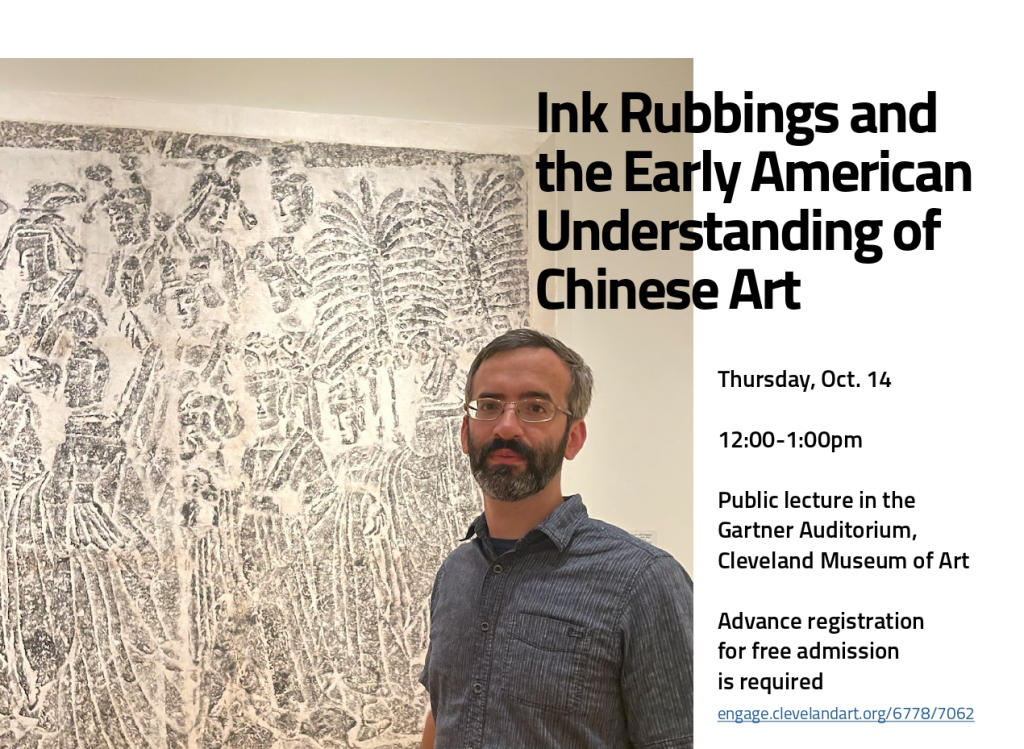Thursday, October 14, 12:00-1:00 pm; Gartner Auditorium, Cleveland Museum of Art.
Tickets can be reserved HERE.
On June 6, 1916, The Cleveland Museum of Art opened its doors to the public
for the first time. Among the artworks in the inaugural exhibition, a pair of
remarkable ink rubbings of Buddhist sculpture dominated the display of
Chinese art. Taken from the imperial procession reliefs of the Binyang Central
Cave at the Longmen Grottoes, such rubbings came to play an outsized role in
the field of East Asian art history in America at the turn of the 20th century.
Despite the increasing presence of original artworks in museums and the
expansion of photographic study collections, early Asian art professionals in
the U.S. continued to place a heavy emphasis on the pedagogical and aesthetic
value of ink rubbings of pictorial images. This talk examines how the needs
of this new class of Asian art professionals in the United States spurred
innovations in display practices and theoretical approaches to ink rubbings
of images. Far beyond the Cleveland inaugural exhibition, these individuals
continued to promote rubbings through dedicated exhibitions. This enduring
appreciation for ink rubbings was due in large part to the resonances of the
medium with the foundational approaches these experts encountered during
their shared early training in the field.
Professor Coleman is a 2022 Hildegarde and Elbert Baker Visiting Scholar
in the Humanities.

